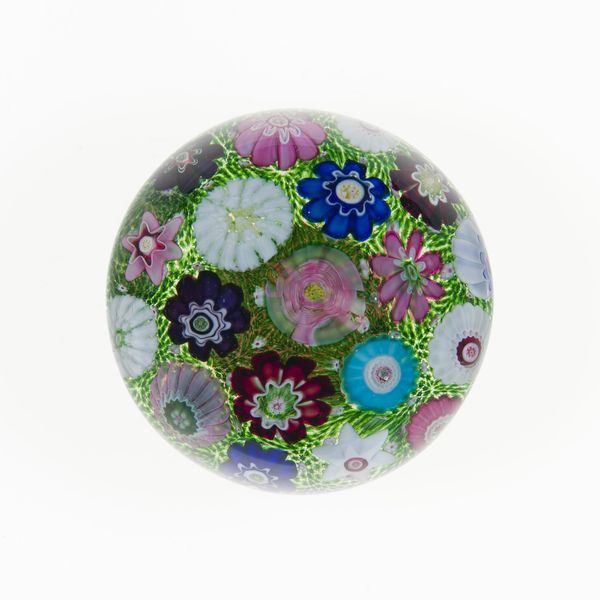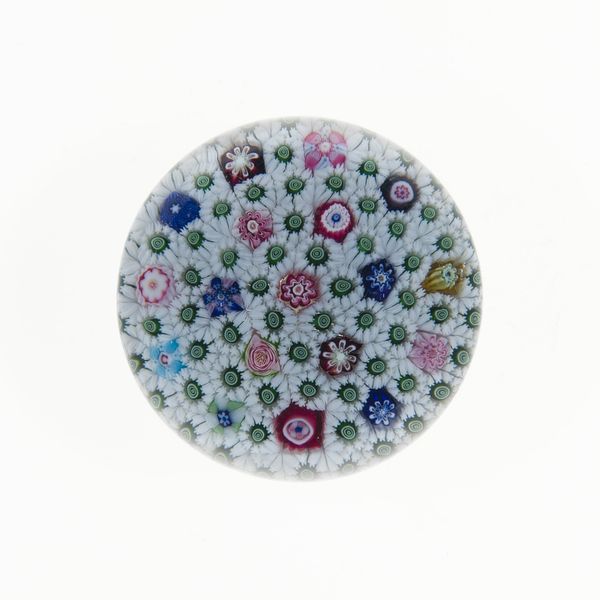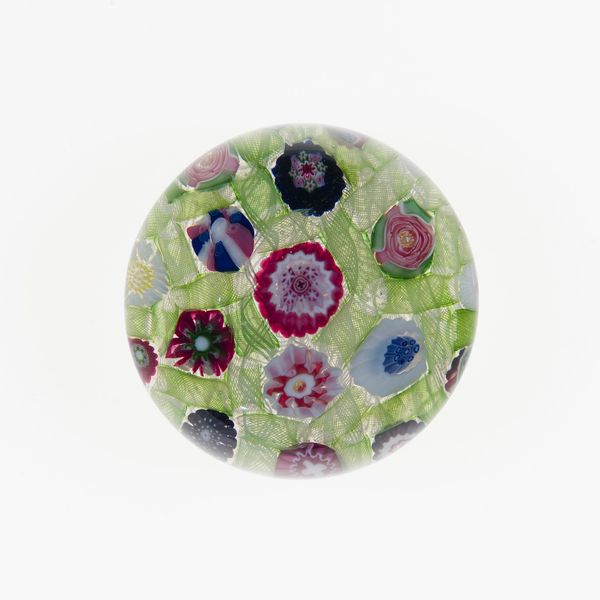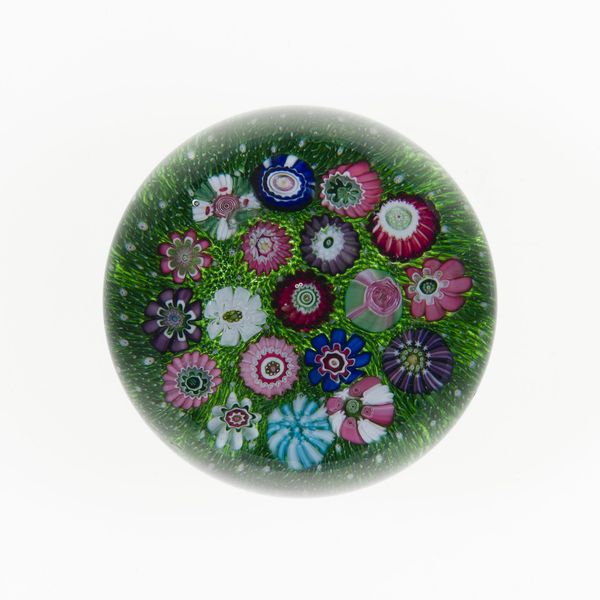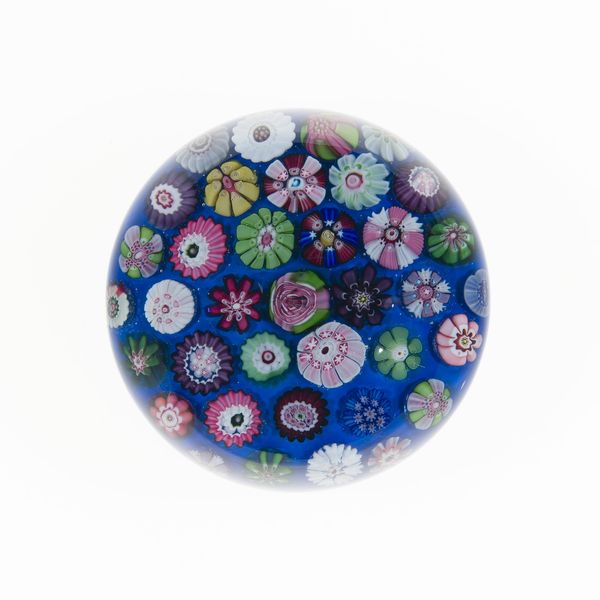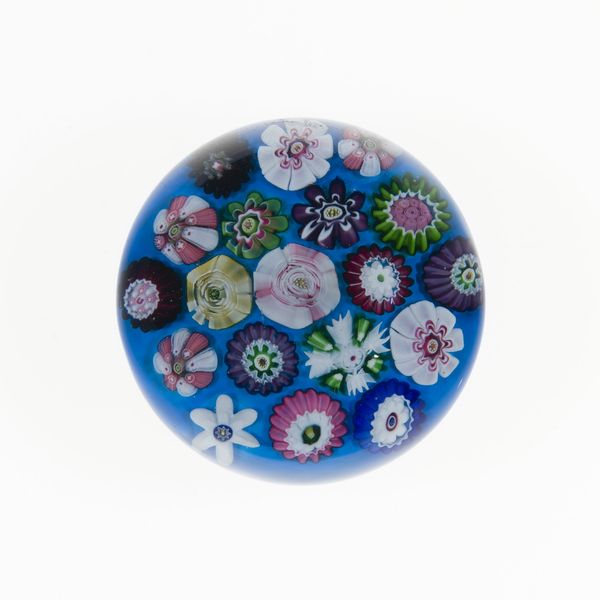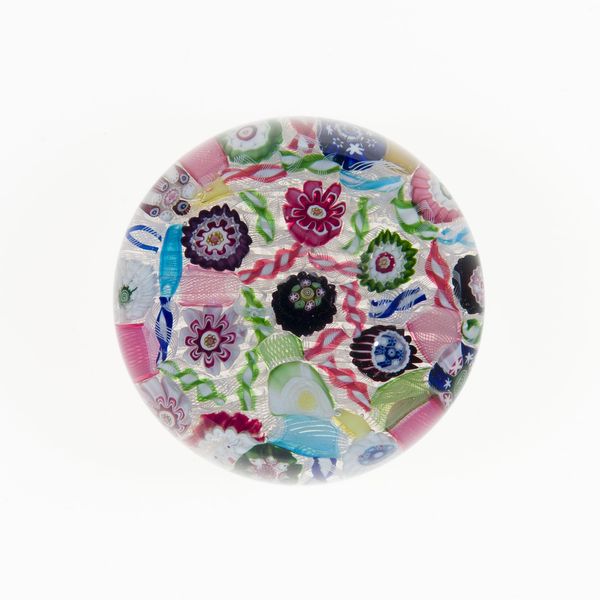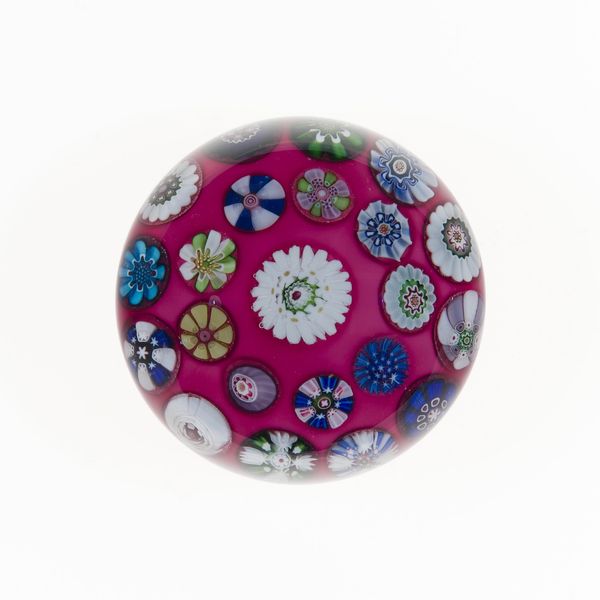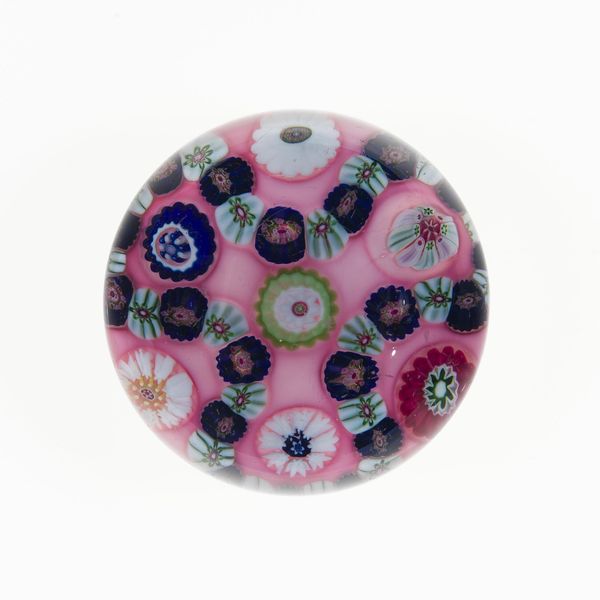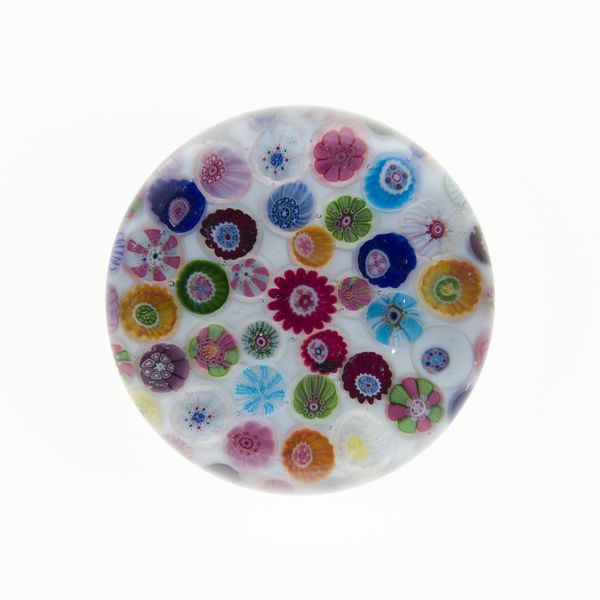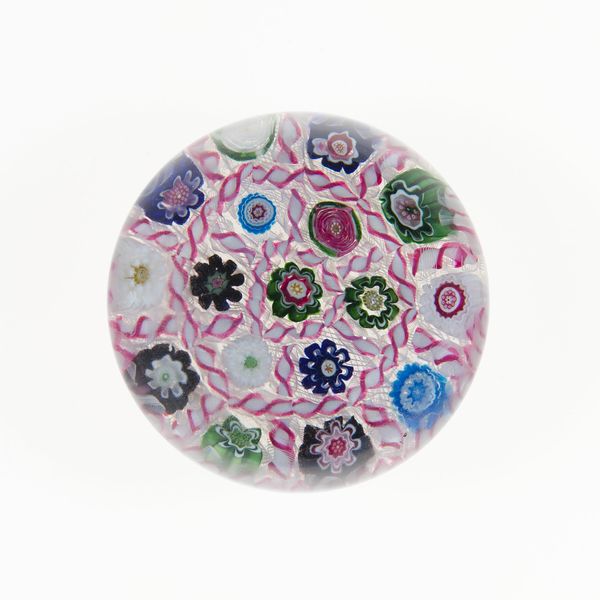
Dimensions: Diam. 8.2 cm (3 1/4 in.)
Copyright: Public Domain
Editor: Here we have "Paperweight," a glass work of art created by Clichy Glasshouse between 1845 and 1860. The variety of colors and tightly packed floral forms give it such a visually rich appearance. What do you see in this piece from a formalist perspective? Curator: This paperweight exemplifies a fascinating dialogue between geometry and nature. The orb form contains meticulously arranged, stylized floral motifs. The controlled, circular format sharply contrasts the organic forms it holds, thereby highlighting a tension between artistic intervention and natural inspiration. Note how each flower is like a semiotic puzzle, hinting at real blossoms yet rendered in pure color and shape. Editor: That’s a compelling way to view it! The geometric aspect, imposed on the organic forms. Does the choice of glass itself play a significant role in your analysis? Curator: Absolutely. The glass not only encases but also refracts and distorts the floral arrangements, adding layers of complexity to the visual experience. It invites the observer to ponder the very act of seeing and representation itself. This begs the question: is this a celebration of nature or an assertion of human control through material manipulation? Editor: I never would have considered that it prompts one to ponder seeing itself. Thanks, that shifted how I perceive the whole thing. Curator: My pleasure. Analyzing art, regardless of its form, allows us to understand our visual assumptions. A new approach unlocks a world of possibility.
Comments
No comments
Be the first to comment and join the conversation on the ultimate creative platform.

